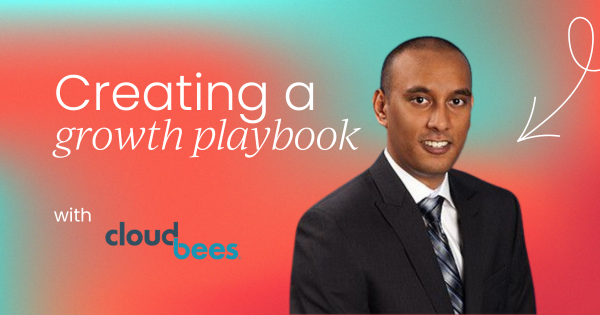You can expect growth marketing thrown at you as one of your responsibilities during your product marketing career. When that happens, don’t be scared!
I'm sharing a barebones yet practical growth playbook you can piece together by building on your product marketing exploits. There are eleven short sections, but you can add or subtract as your situation calls for.
Let’s dive in.
The growth scope
Start by defining the scope of your growth effort. I use the AARRR user behavior metrics as a guide.
- Acquisition: Initial entry points for users into your product
- Activation: Users recognizing the value in your product
- Retention: Number of users who return to your product
- Revenue: How you turn your engaged users into customers
- Referral: Number of users who become product evangelists
Your product may have specific growth challenges at any moment. Don’t stretch yourself thin. Be specific about the initial focus - is it acquisition, activation, or retention? It’s usually one of the three (sometimes two) in the early stages.
PLG-specific KPIs and definitions
At this step, you must get your team or company to transform the scope from the previous section into trackable KPIs. And you don’t stop there. You get crystal clear on what each KPI means and remove any ambiguity.
For example, let’s say you want to focus on acquisition and activation for your developer tools solution. Your KPIs may span the usual flow, such as unique visitors, signups, engaged developers, to list a few.
Finally, set a timeline and attach measurable numbers to each KPI. You need to be tactful in this step. If you’re aiming for a million unique visitors in three months - ask yourself if it’s genuinely a stretch goal while not being too unreasonable that you squash the growth effort even before it crawls.
Ideal user personas
Answer these two questions to fill out this section - Who do we want to target? Can we get as specific as possible?
I challenge you to stick to one core user persona here as much as you can. Some teams may get antsy about it, but it's a worthy decision to maintain your sanity. Honing in on one key user persona lets you amplify everything you do, from exploring specific experiments to choosing your traction channels.
In the worst-case scenario, have two or three user personas as a compromise. I would still advise against it!
Primary use cases
Singularity is the central theme for this entire playbook. We’re going to assume you took my advice to stick to one core user persona. You want to go a step further and choose the persona’s key use case in your product.
This may be a challenging choice. Yet deciding on this ONE use case lets you double down on what you believe constitutes immediate value for this persona. It shouldn’t be a complicated choice if you have any sort of initial product-market fit.
KPIs: Baseline vs. goals
Think back to the KPIs and specifics from the second section. You’re now going to do a quick gap analysis. Where do you stand currently on those KPIs? What’s the gap you need to make up to reach your goals? What interesting things must you account for to compensate for that gap within your set timeline?
Traction channels and owners
There’s one more step before we get to growth experiments. You have to consider the different traction channels you can rely on. Traction channel refers to any avenue that gets you new users. There are multiple traction channels - about 19, according to the popular book by Gabriel Weinberg & Justin Mares.
These channels include PR, content marketing, email marketing, SEO, SEM, trade shows to highlight a few. Assign an owner for each of these channels. You will likely already have someone within your company responsible for each channel in question.
I will also add two more traction channels to the list of 19 - influencer marketing and in-app guidance: think messaging, interactive demos, quickstarts, integrated docs and feedback.
Growth experiments
It’s your time to get creative with the owners of your traction channels in this section. Now that you know your scope, KPIs, timeline, persona, primary use case, gap vs. KPI goals, what are the two to three experiments you can run across your traction channels in a one to two week cycle?
If you have a dedicated budget for these growth experiments, that’s great; if not, you can still be innovative with the scale and diversity of experiments even on a $0 budget!
Your traction channel owners may even volunteer to set aside some of their existing budgets to help you in this process. This is a collaborative effort - you’ll need to find your partners in product management, customer success, marketing, product ops, as you go along.
To keep your growth experiments on track, you can create a minimalistic table in your playbook with the following categories:
- Experiment
- Traction channel
- Relevant KPI
- Status
- Start and end dates
- Resources and comments
Overall list of learnings
Every growth experiment is a learning opportunity you don’t want to waste. After every growth experiment ends, quickly summarize the one to three takeaways you want to take along with you for the future of this effort.
If you’re blanking on this step, consider what the experiment taught you about the traction channel, its influence on the KPI, a specific insight on the persona, use case, or product. There’s always something to glean.
Mindset
I want to add to my earlier point about collaboration. It’s pretty likely your growth marketing effort is an inorganic grouping of people parceling some time away from their regular day-to-day responsibilities. You want them all to subscribe to this initially thankless effort. They and you will have to believe in a few common ideals.
Add a few lines in this section on what mindset you want each of them to bring. Growth experiments require an innate love for discovery, openness, data, collaboration, trade-offs. Plus, prioritizing speed and the freedom to make mistakes. Ensure each one subscribes to it if that’s the case.
Risks, blockers, and information gaps
Not everything’s perfect. Capture all the issues and limitations you encounter as you progress with this playbook. The success of this playbook can even open room for more dedicated resources to address these limitations.
Appendix
Precisely as the name states. Link all related documents and initiatives. Stay abreast of your product milestones.
Also, include a link in this section to notes from your weekly/bi-weekly check-ins with your impromptu growth team. These check-ins are not only meant to kickstart new experiments and sunset old ones.
You get to review the status of your progress, find out which traction channels work, compile issues and insights. In a nutshell - What did we try? What did we learn? What do we plan to do next?
A few final thoughts…
Growth marketing can be overwhelming at first, especially when you’re tasked with it as a PMM without any experience in this arena.
Your challenge and opportunity is to compartmentalize the chaos by parachuting some order and getting into execution mode, hence the playbook. I wish you the best in your growth endeavor!
Feel free to reach out if you have questions.


















 Follow us on LinkedIn
Follow us on LinkedIn



.svg?v=85af970283)